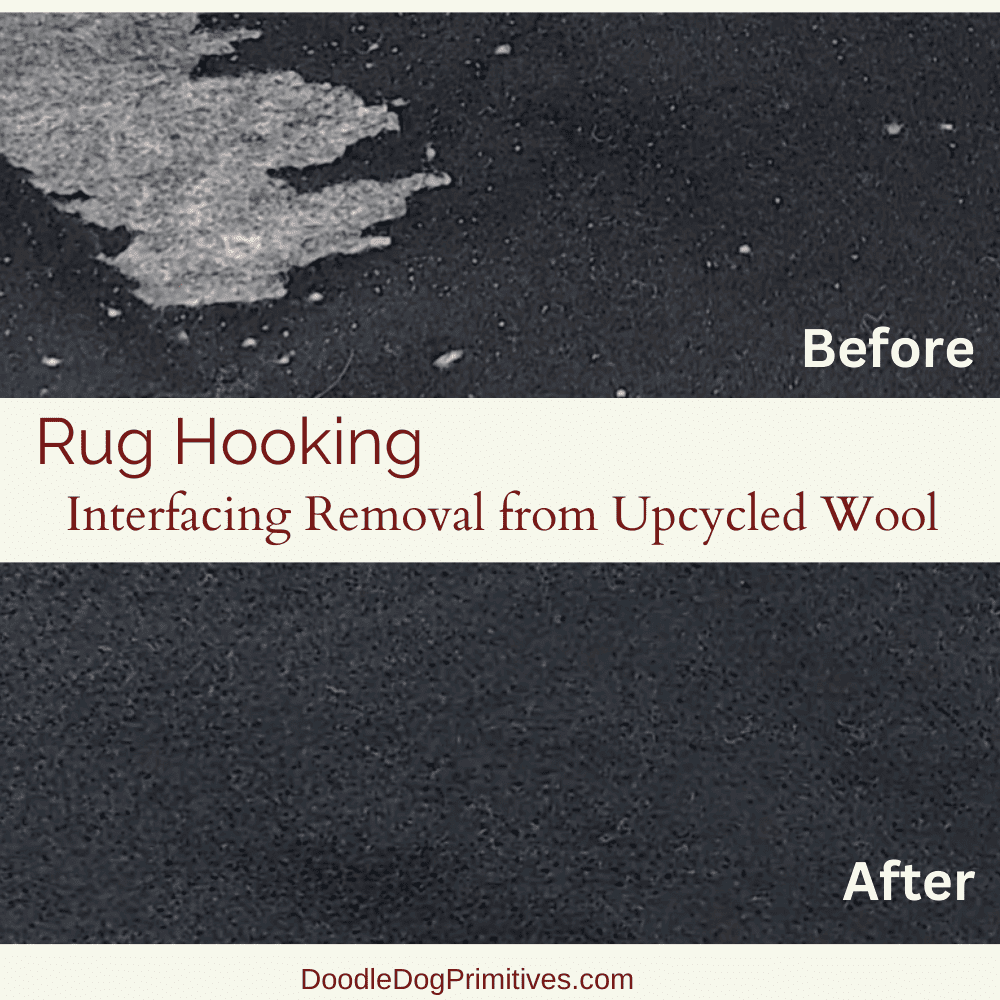
In my felted wool stash, I have quite a bit of wool from garments that I have thrifted, washed, deconstructed, and felted. Unfortunately, some of this wool has interfacing residue on one side. These pieces of wool still work fine for wool applique but not for rug hooking. In this post, I did an experiment to try to remove interfacing from wool fabric.
Watch the Video:
The Interfacing Removal Experiment:
I had a reader suggest removing interfacing on wool fabric with boiling water. I am not entirely sure what her method is but here’s what I tried.
Warning: If your wool isn’t already felted, boiling the wool is likely to felt the wool, which is what you want anyway for rug hooking and applique but perhaps not what you would want for other projects.
I had three different wool samples to try:
- Black wool with blue interfacing specks
- Black wool with some larger spots of interfacing still stuck on and lots of specks of interfacing
- Red wool with interfacing still completely in tact.
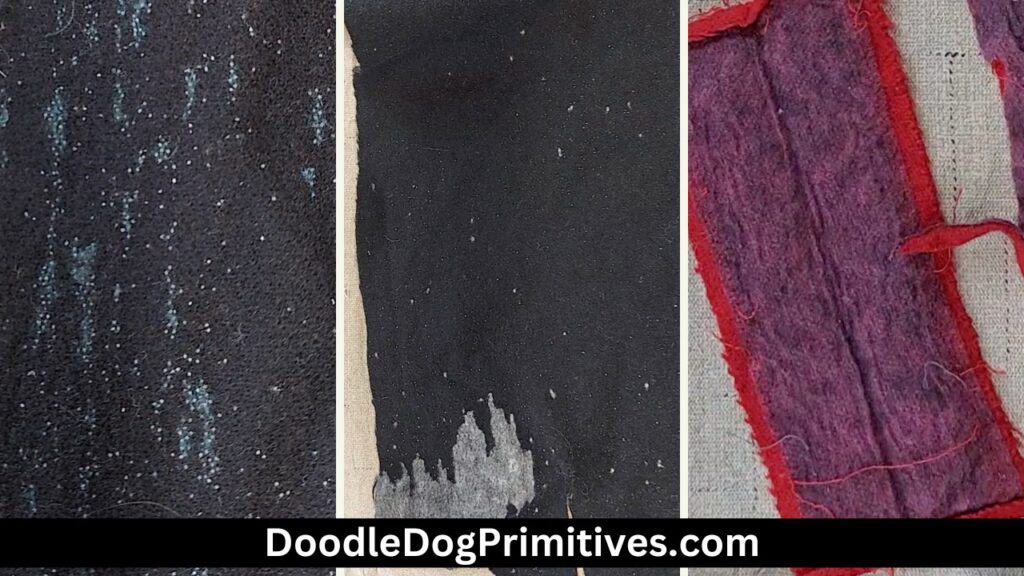
Using my stock pot and utensils used exclusively for crafting, I heated up some water to a simmer.
Wool Sample 1:
I started with the black wool with blue interfacing specks. I only put that wool in the pot. This turned out to be important because some of the dye on this wool (and the red wool) came out in the process.
Warning: Let the wool cool before handling it with your hands.
I took the wool out after a minute or so of simmering and tried to scrape off the interfacing. It was still stuck on tight so I put the wool back in and let it simmer 20 minutes. It was clear that a lot of the dye had come out of the fabric as the water was very dark. After the wool dried, you can still see some specks of interfacing but it is much better. However, the wool is no longer black. But it is a pretty blue color.
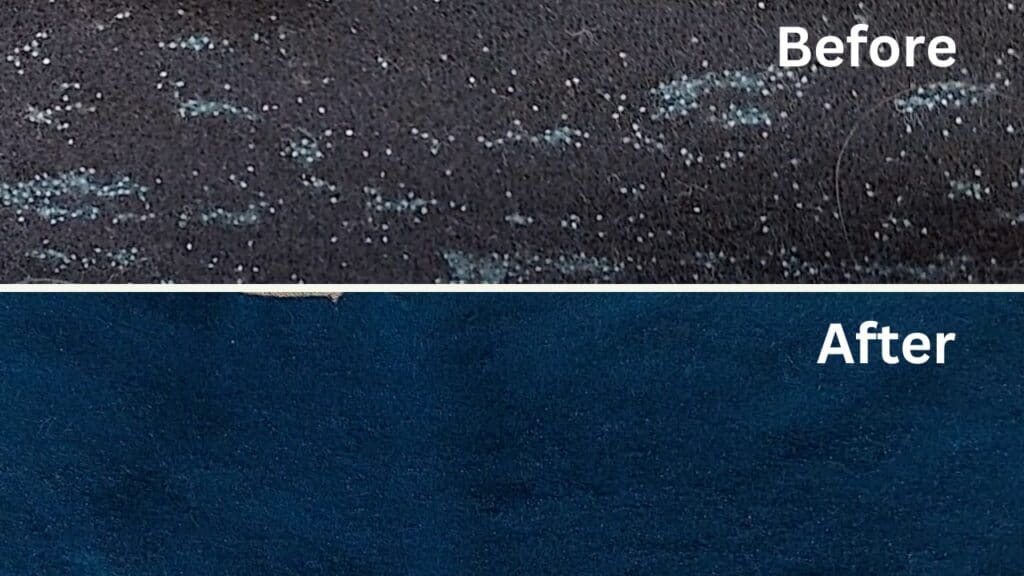
Wool Sample 2:
I washed the stock pot and utensils and got some fresh water simmering.
The second wool I tried was the black wool with larger spots of interfacing. I simmered it for 25 minutes. There was very little dye in the water with this wool.
The larger pieces of interfacing peeled right off. The specks came off easily too but each one had to be picked off individually.
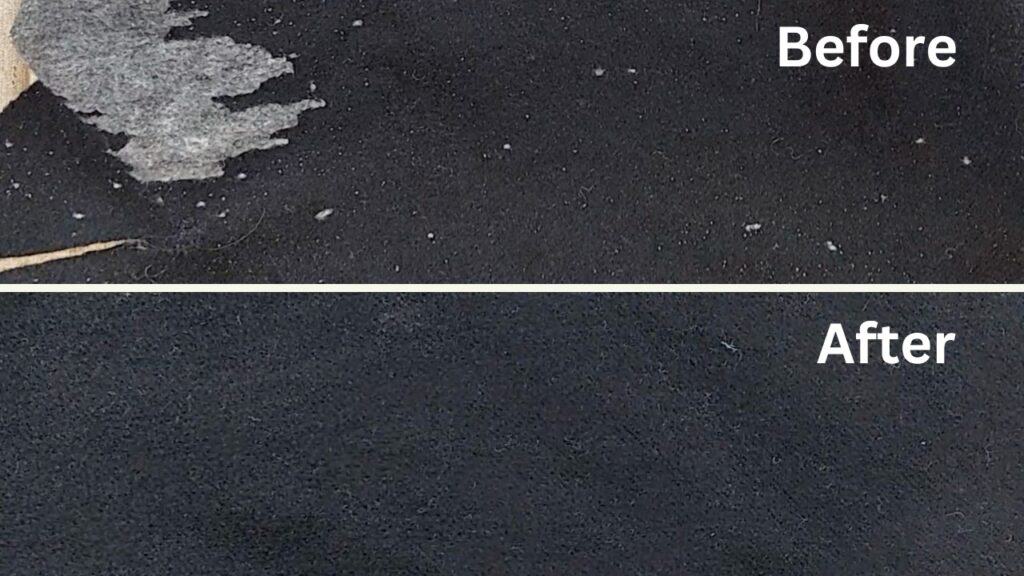
Wool Sample 3:
Finally, I simmered the red wool pieces 20 minutes. After removing the wool from the water and some cooling time, the interfacing peeled right off. However, the wool is now more pink than red.
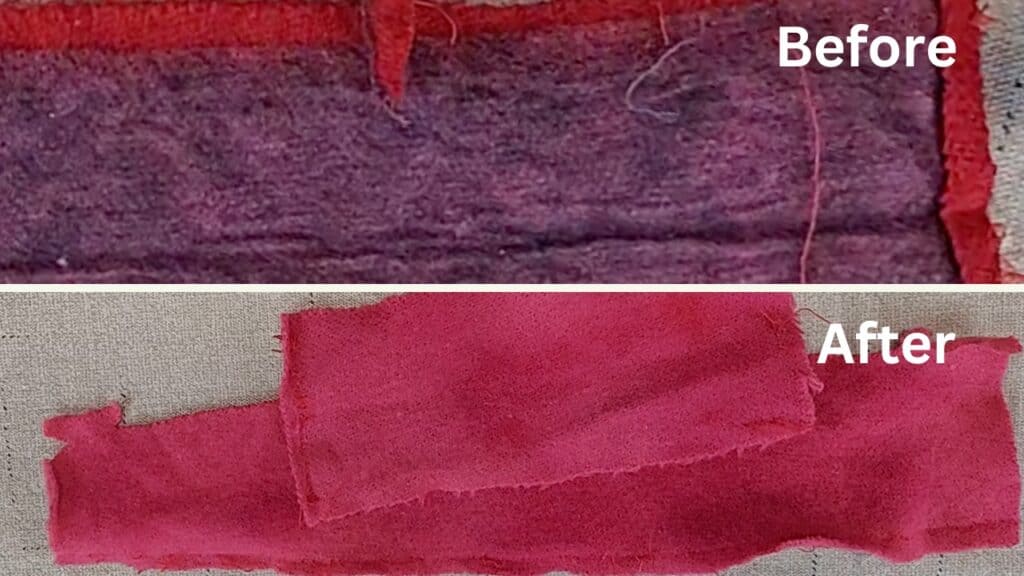
Interfacing Removal Experiment Conclusions:
Boiling the wool to remove the interfacing worked surprisingly well. I think it would work best before picking at the interfacing – so the interfacing is still one solid piece.
If you want to try this method on some wool that you love the color, try a small sample first to make sure the color will hold.
You might like our other rug hooking tutorials.
Pin this Felted Wool Tutorial:


